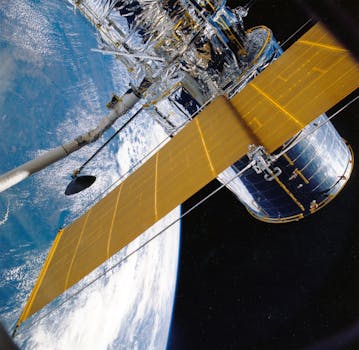Connecting the Globe: The Impact of Orbital Technology on Global Communication

Orbital Technology, also known as satellite technology, has been a game-changer in the field of global communication. The impact of orbital technology on global communication has been tremendous, connecting the globe like never before. With the help of satellites orbiting the Earth, people from all over the world can now communicate with each other effortlessly, regardless of their geographical location.
Orbital technology has made it possible to transmit data, voice, and video signals over long distances, enabling global communication at a rapid pace. This technology has not only connected people but also enabled the exchange of information, ideas, and cultures between different countries and communities. The impact of orbital technology on global communication can be seen in various aspects, including international business, education, healthcare, and entertainment.
One of the significant benefits of orbital technology is its ability to provide global coverage, even in remote and inaccessible areas. Satellites can reach areas where traditional communication infrastructure is lacking or non-existent, making it possible for people in these areas to connect with the rest of the world. This has been particularly beneficial for developing countries, where access to communication services was previously limited.
Orbital technology has also enabled the development of various applications and services, such as global positioning systems (GPS), satellite navigation, and satellite television. These applications have transformed the way we live, work, and communicate, and have had a significant impact on various industries, including transportation, agriculture, and media.
In addition to its benefits, orbital technology also has some challenges and limitations. One of the significant challenges is the cost of launching and maintaining satellites, which can be prohibitively expensive. Additionally, satellites are vulnerable to interference, jamming, and other forms of disruption, which can affect their performance and availability.
Despite these challenges, the future of orbital technology looks promising. With advancements in technology and the development of new satellite constellations, the cost of launching and maintaining satellites is decreasing, making it more accessible to a wider range of users. Additionally, the development of new applications and services, such as satellite-based internet and satellite-based Earth observation, is expected to drive the growth of the orbital technology industry in the coming years.
In conclusion, the impact of orbital technology on global communication has been significant, connecting the globe like never before. With its ability to provide global coverage, enable the exchange of information and ideas, and drive the development of various applications and services, orbital technology has transformed the way we communicate and interact with each other. As the technology continues to evolve and improve, we can expect to see even more innovative applications and services emerge, further connecting the globe and transforming the way we live and work.
See more:

